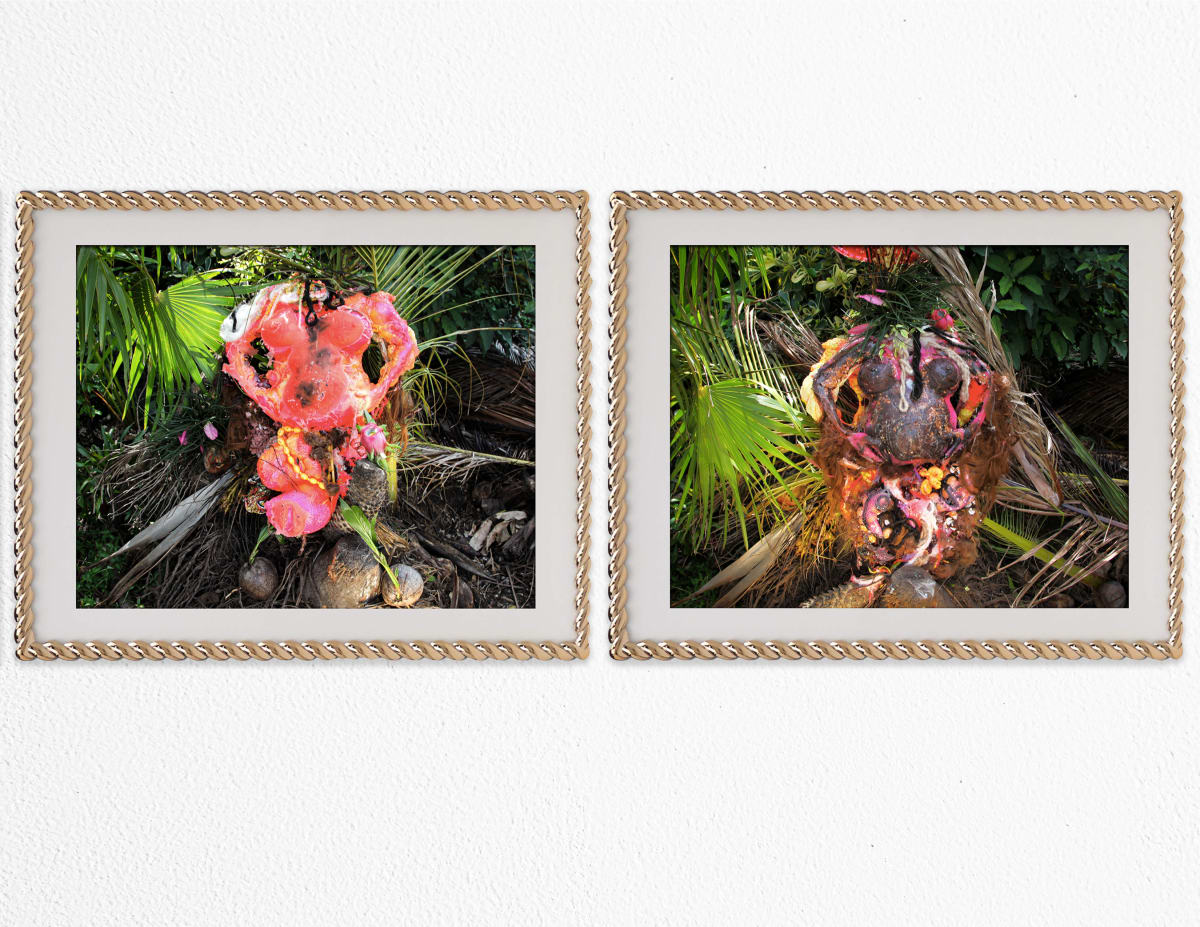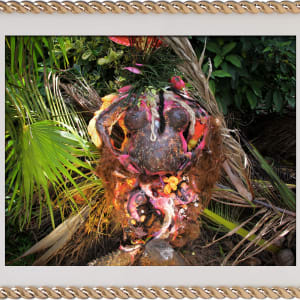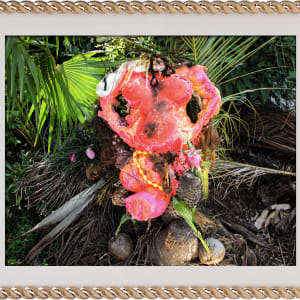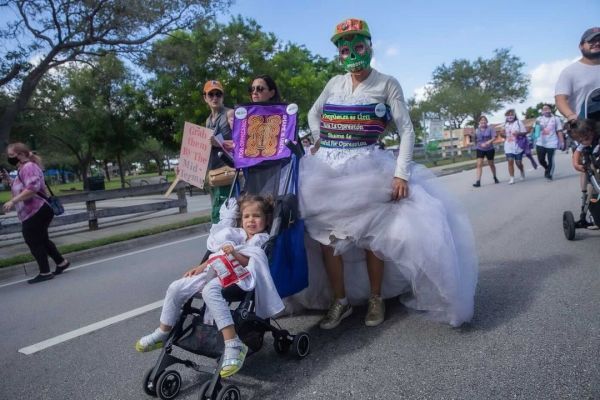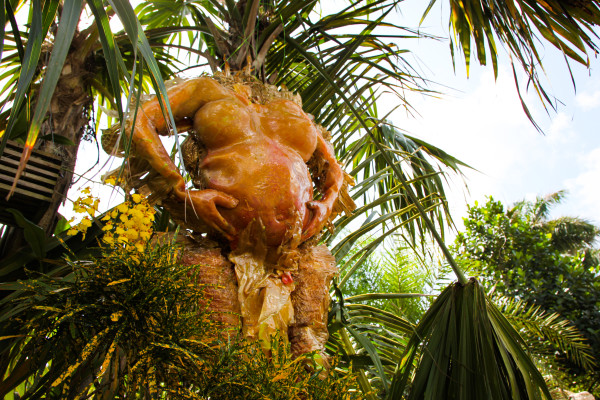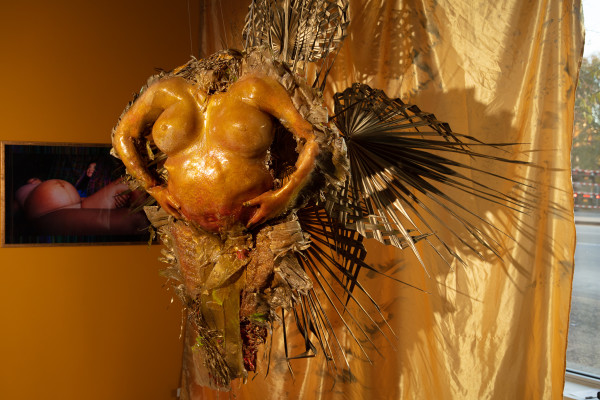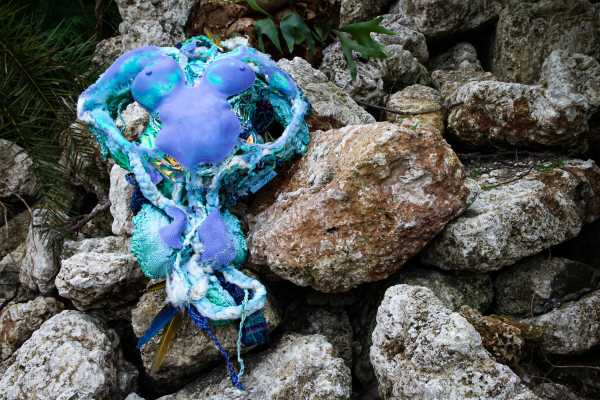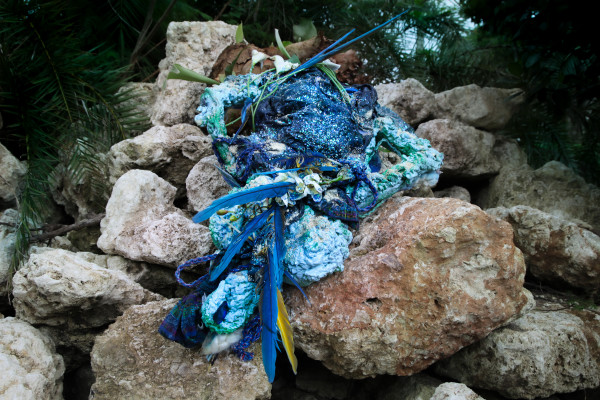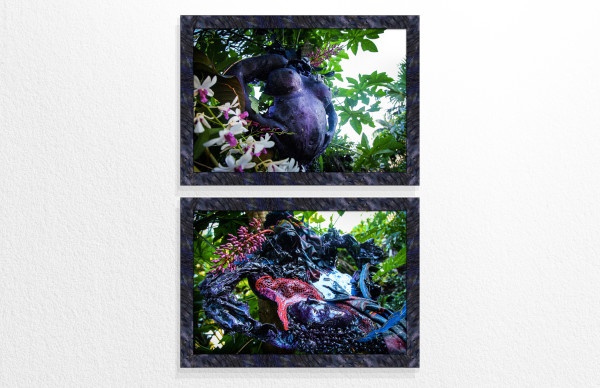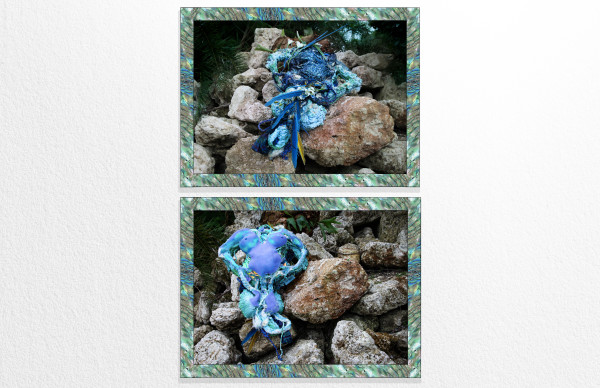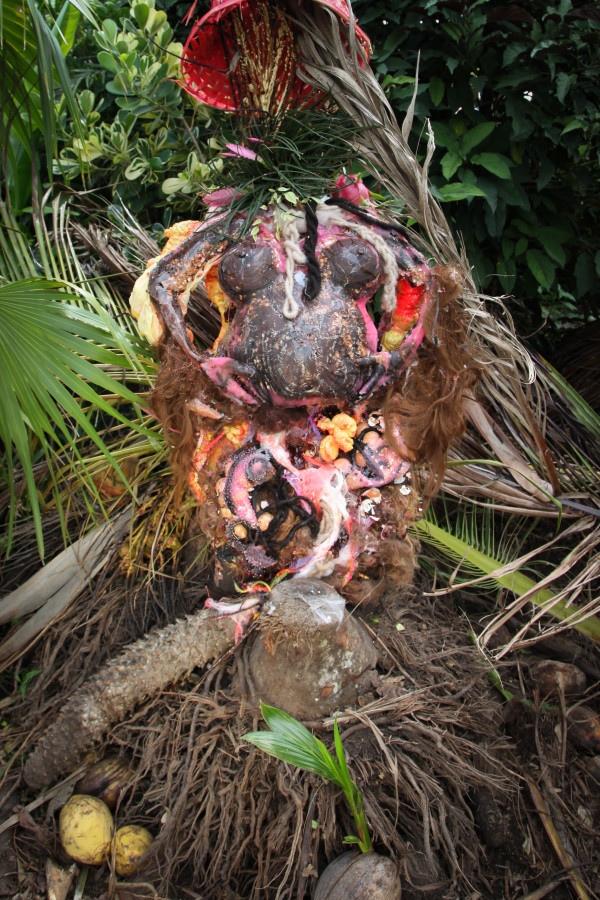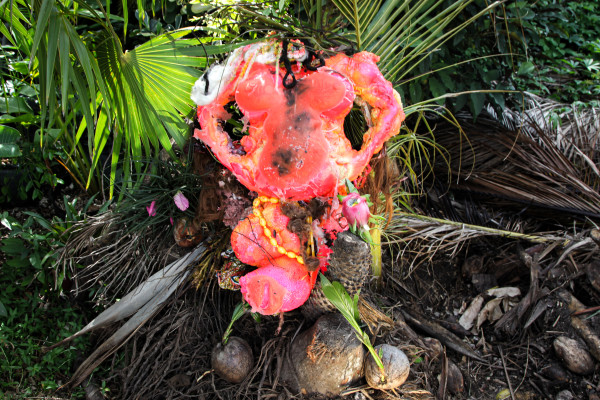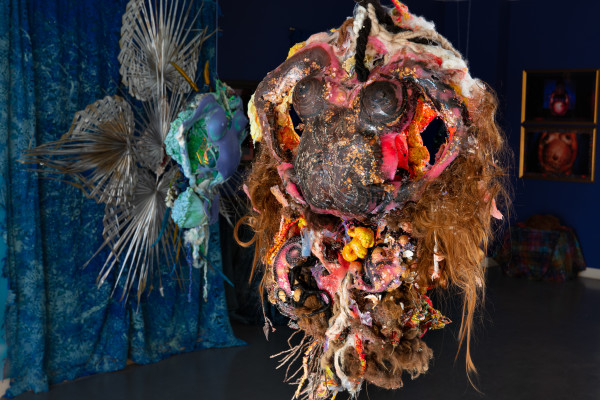Two pregnant effigy figure nest among a coconut palm nursery as a syncretic pieta between an exotic, synthetic mother and her endemic habitat. Coffee and neon flesh encase each mummy in natural and industrial materials cast in domestic construction materials. An altar "asiento" of two Mother Mold monuments, the title draws from syncretic liberation mythology: Ciguapa and Pachamama dieties are a translation between gendered geographies and spiritual traditions of Caribbean and Andean cultures of the Americas.
Recalling liberation mythological retreats where botanica retablos often found in tropical terrains, the work restores the extants to their queer, quaint and humid home.
The work considers the culture of procreation in the Americas- a complicated historical, political, and geographic context wherein conquering the wild landscape, reproductive bodies, and indigenous societies stem from a colonial Eurocentric legacy. Inhabiting its endemic environment, the fertility votive is made by combining intimate ephemera and environmental waste cast into a slurry of domestic construction materials. Monuments to the fertile survivors of man-made and natural disasters, the Mother Mold effigy figures bear the burdens of internalized structural violence made in and of our bodies, our landscape and our movement. Emboldened by its tropical, endemic habitat; the materiality of the maternal monument embodies our collective refuse as a site for procreative refuge.
Upcycled waste including intimate ephemera and environmental detritus are cast in domestic construction materials to create the Mother Molds including: Neon floor resin, wall insulation foam, building stud, plaster, interior latex house paint, mica powder, phosphorescent pigment, plastic funerary plants, tropical foliage, discarded plastic bags, wood beads, cockroach, anise, cumin, cinnamon, coriander, black beans, egg shells, coffee slurry, gardenia perfume bottle, Peruvian Straight hair weave, bamboo fiber, braided synthetic rope & Quipus from llama & alpaca fur
- Created: September 03, 2021
- Collections: Linea Negra photographs

